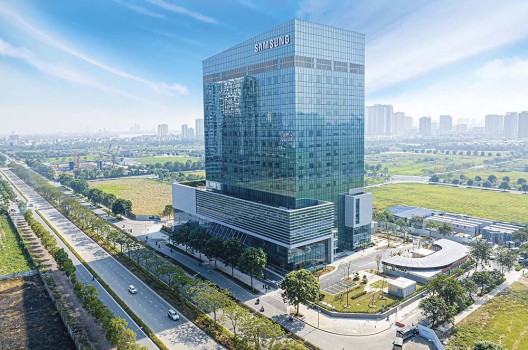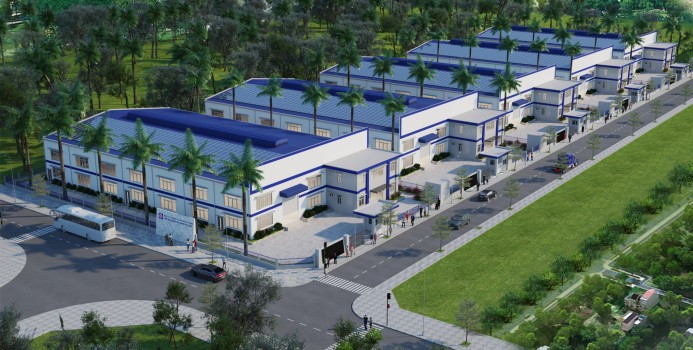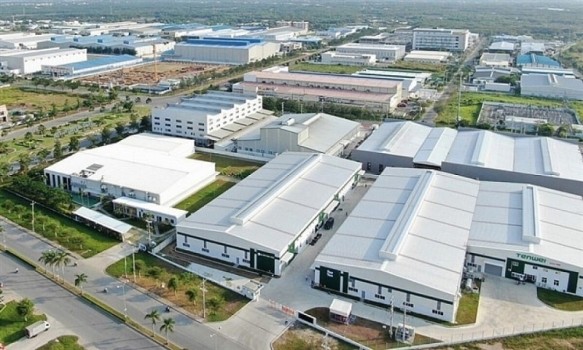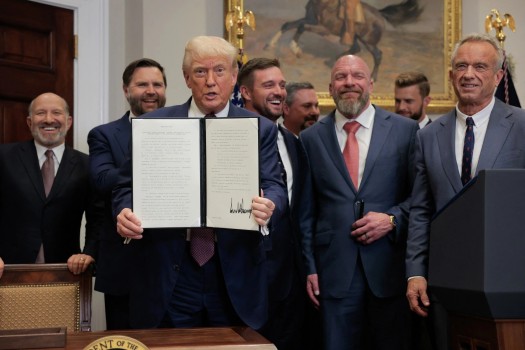The explosive expansion of the Industrial Park race
Despite the difficult Covid-19 outbreak, new industrial parks are continually being launched throughout the provinces and cities, and several significant projects have begun operations.
According to Savills Vietnam's industrial real estate market study for the first six months of the year, despite the problematic events of the fourth epidemic, the competition to build industrial parks is heating up.
The availability of industrial land grew by 9.3% in the first half of the year compared to the same time in 2020, with dozens of industrial park projects approved in 13 provinces and cities, offering thousands of hectares of land area to investors in the next years.
Bac Ninh has the most projects, with five upcoming industrial parks. Notably, Que Vo III industrial park has an area of 208.54 hectares and a total investment capital of 120.87 million USD, whereas Gia Binh II industrial park has an area of 250 ha and a total investment capital of 120.87 million USD (built by Hanaka Group). In the Central region, Quang Tri anticipates new projects such as the Trieu Phu industrial park, which will span roughly 529 hectares.
Furthermore, the Quang Tri industrial park has a total investment of 90.17 million USD and was created by a joint venture of three investors, including Vietnam - Singapore Industrial Park (VSIP) and Amata City Bien Hoa Joint Stock Company.
Vinh Phuc province is also expecting new industrial parks totaling 500 hectares, including Song Lo, Tam Duong 1, Thai Hoa - Lien Son - Lien Hoa. Other projects are also planned for Hai Duong, Vinh Long, Quang Nam, Thua Thien Hue, Nam Dinh, and Nghe An.

Warehousing, logistics, port, industrial real estate services in the East of Ho Chi Minh City. Photo: Quynh Tran.
Along with the surge of industrial real estate in the North and Central regions, the South's industrial zone market was active in the first half of the year. According to Colliers Vietnam's second-quarter industrial real estate market research, Long An announced four new industrial clusters in the South this year: Vinh Khang, Tan My, Tu Phuong, and Hiep Hoa.
These industrial clusters, when finished, will add almost 200 hectares to the province's accessible industrial land area. The province's industrial cluster development plan for 2021-2030 is to be promoted further to attract additional investment.
Vinh Long and Tay Ninh provinces have also seen a surge in industrial park developments in the last 6 to 12 months, positioning them as new industrial zones alongside the South's industrial centers, which have molded and grown rapidly. Ho Chi Minh City, Long An, Binh Duong, and Dong Nai have been powerful for decades.
Binh Phuoc, a lesser-known province, could not pass up the opportunity to capitalize on this surge of industrial real estate. Binh Phuoc has now been approved by the Prime Minister to plan 13 industrial parks totaling 4,686 hectares. In which, 9 industrial parks with an occupancy rate of more than 95% have been placed into operation, with two freshly put into operation garnering the interest of many local and foreign investors, namely Minh Hung Sikico and Minh Hung Sikico, Binh Phuoc Becamex.
According to CEO Colliers, the transfer in manufacturing from China, as well as a succession of Free Trade Agreements (FTAs) inked, has raised the demand for industrial land across the country. To accommodate this demand, new industrial parks have been proposed or developed throughout the North, Central, and South regions, resulting in a recent boom in the industrial real estate market despite the pandemic.
However, Mr. David Jackson believes that the second half of this year will provide a lot of issues for Vietnam as the illness spreads swiftly, invading industrial zones and generating big outbreaks across the nation.
CEO Colliers confirmed, the shift of production from China as well as a series of Free Trade Agreements (FTAs) signed have increased the demand for industrial land across the country. New industrial parks have been planned or built throughout the North, Central and South provinces to meet this demand, leading to a boom in the industrial real estate market in the past time despite the epidemic.
However, according to Mr. David Jackson, the second half of this year will pose a number of challenges for Vietnam when the disease spreads rapidly, entering industrial zones causing major outbreaks across the country.
Although there are many opportunities, Mr. David Jackson said that attracting foreign investment in industrial real estate in Vietnam still has some bottlenecks: unsynchronized infrastructure and uncompetitive logistics costs. There are a number of issues about mechanisms and regulations to attract large investors. If these weaknesses can be improved, the market can develop at a faster and more sustainable rate.
Photo: @leungchopan
Nguồn:
Related news

09/08/2025
VIETNAM AFFIRMS ITS POSITION AS A GLOBAL TRADE AND MANUFACTURING HUB
Vietnam Affirms Its Position as a Global Trade and Manufacturing Hub

09/08/2025
VIET NAM 'S INDUSTRIAL REAL ESTATE RENT HAS INCREASED BY 70%
VIET NAM 'S INDUSTRIAL REAL ESTATE RENT HAS INCREASED BY 70%

09/08/2025
WILL THE DEMAND FOR INDUSTRIAL REAL ESTATE CONTINUE TO RISE ?
Will the Demand for Industrial Real Estate Continue to Rise?

09/08/2025
U.S. RECIPROCAL TARIFFS OFFICIALLY TAKE EFFECT
U.S. RECIPROCAL TARIFFS OFFICIALLY TAKE EFFECT
Copyright © 2022 Viet Huong IP., Ltd. All Rights Reserved
TOP



